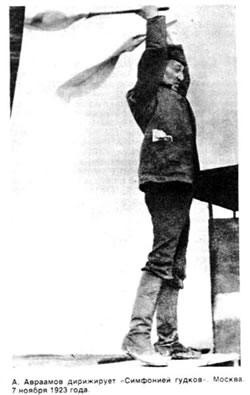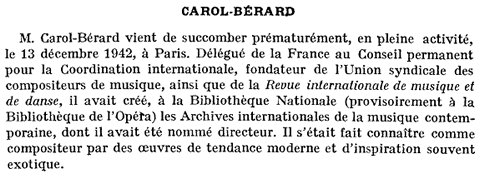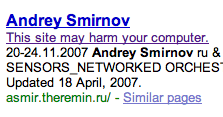Dead composers and a hairdresser (japanese)
february 08, 2008.
Recently I spent a lot of time finishing writing the first in series of texts that are part of an enterprise that Rébus and I some time ago embarked upon, and in which we aim to show how the practice of electroacoustic improvisation (EAI) may be seen as a metalanguage through which its practitioners generate an associative discourse on the interrelatedness of the multitude of sound and musics that constitutes each player’s personal and largely private soundscape-through-history (sonic memory). As of course (EAI) is 'that what we do when we do what we do', these 'theoretical reflections' can but be firmly rooted in our own practice and experience and the way in which we view ourselves and our many partners in sound. The constant moving and maneuvering on such an intertextual level made finishing writing the paper (last week) feel like coming home after a long and fascinating journey ( * ) ...
 Talking
about home and our practice of (EAI):
on the evening of friday february 16th, 2008, I will join the belgian
Brocante Sonore in a performance at Fukiko, a small japanese
salon de coiffure (hairdresser) in the center of Vincennes, not
very far from where I live. (Click the picture to take a closer look at
the flyer.) The salon has been there for quite a while, and myself,
I have also been living in that neighborhood for many, many years. So isn't
it curious that I never ever before have noticed this service franco-japonnais
exceptionnel, with a once bright yellow front that meanwhile however
has clearly gathered the wear and dust of ages? Somehow I never did, though
it sits in a street through which I pass regularly just next to the commissariat,
just across the road of the small japanese restaurant where I sometimes
dine, but which - as by now I actually learned from Fukiko's japanese
coiffeuse - is run by chinese.
Talking
about home and our practice of (EAI):
on the evening of friday february 16th, 2008, I will join the belgian
Brocante Sonore in a performance at Fukiko, a small japanese
salon de coiffure (hairdresser) in the center of Vincennes, not
very far from where I live. (Click the picture to take a closer look at
the flyer.) The salon has been there for quite a while, and myself,
I have also been living in that neighborhood for many, many years. So isn't
it curious that I never ever before have noticed this service franco-japonnais
exceptionnel, with a once bright yellow front that meanwhile however
has clearly gathered the wear and dust of ages? Somehow I never did, though
it sits in a street through which I pass regularly just next to the commissariat,
just across the road of the small japanese restaurant where I sometimes
dine, but which - as by now I actually learned from Fukiko's japanese
coiffeuse - is run by chinese.
The Brocante's Anthony Carcone discovered it and took me there on one of the two afternoons that he spent with me recording the material for a short radio reportage that he did around my Found Tapes Exhibition. Antony's reportage will be broadcast on France Culture as part of the emission Décibels, at the very moment that we perform at the hairdresser's ... As I only recently had my hair cut at Fukiko's (while having, almost, simultaneously a japanese hand massage and a marvelous back rub), it is not clear whether friday's concert will come with another new coiffure. But if it does, it'll make a nice companion to my Coupe Beaufort on the Ameland beach, in may 2005 (watch it on video at park.nl).
 The
picture to the left shows russian composer Arseny Avraamov (Арсений Михайлович
Авраамов, 1886-1944), who is conducting the 1923 performance of his Symphony
of Factory Sirens from the roof of a factory building, in Moscow on
the occasion of the sixth birthday of the october revolution. It is one
among the many intriguing historical documents, that I found are part of
a power-point presentation entitled 'non-linear history' on the website
of Andrey Smirnov, who is (among other things) director of the Theremin
Center for Electroacoustic Music at the Moscow Sate Conservatory and one
of the founders and members of the Moscow
Laptop Cyber Orchestra. ( ** ) Avraamov's Symphony
is a megalithic piece of concrete ‘social realist art’ which appears to
have been performed twice: first on the occasion of the fifth anniversary
of the revolution in the Caspian port of Bacu, and again one year later
in the Moscow of 1923. Avraamov’s orchestra included choirs (to be joined
by the spectators), factory sirens, a steam whistle organ built from some
fifty steam whistles, machine guns and cannons (which were used as a sort
of a 'percussion group'), foghorns, artillery guns and hydro-airplanes.
The Symphony of Factory Sirens was conducted by a team of conductors
using flags and pistols, with the composer overseeing and leading the work
atop a factory roof. Interestingly, only a few days ago I found out that
actually ReR Megacorp offers a
CD with 'full documentation' and
'critical reconstructions of keyworks' by Avraamov and others, including
the Symphony. Now that will be something to look forward to ... I doubt
that original audio documents of the event are available, so the 'reconstruction'
will probably be based on the score, that (still) exists. (There's an image
of the opening measure of the Symphony of Factory Sirens in Andrey
Smirnov's powerpoint.)
The
picture to the left shows russian composer Arseny Avraamov (Арсений Михайлович
Авраамов, 1886-1944), who is conducting the 1923 performance of his Symphony
of Factory Sirens from the roof of a factory building, in Moscow on
the occasion of the sixth birthday of the october revolution. It is one
among the many intriguing historical documents, that I found are part of
a power-point presentation entitled 'non-linear history' on the website
of Andrey Smirnov, who is (among other things) director of the Theremin
Center for Electroacoustic Music at the Moscow Sate Conservatory and one
of the founders and members of the Moscow
Laptop Cyber Orchestra. ( ** ) Avraamov's Symphony
is a megalithic piece of concrete ‘social realist art’ which appears to
have been performed twice: first on the occasion of the fifth anniversary
of the revolution in the Caspian port of Bacu, and again one year later
in the Moscow of 1923. Avraamov’s orchestra included choirs (to be joined
by the spectators), factory sirens, a steam whistle organ built from some
fifty steam whistles, machine guns and cannons (which were used as a sort
of a 'percussion group'), foghorns, artillery guns and hydro-airplanes.
The Symphony of Factory Sirens was conducted by a team of conductors
using flags and pistols, with the composer overseeing and leading the work
atop a factory roof. Interestingly, only a few days ago I found out that
actually ReR Megacorp offers a
CD with 'full documentation' and
'critical reconstructions of keyworks' by Avraamov and others, including
the Symphony. Now that will be something to look forward to ... I doubt
that original audio documents of the event are available, so the 'reconstruction'
will probably be based on the score, that (still) exists. (There's an image
of the opening measure of the Symphony of Factory Sirens in Andrey
Smirnov's powerpoint.)
{added February 9th 2020:} The Symphony of Factory Sirens may very well be considered as the first ever unPublic 😋. "Avraamov did not want spectators, but intended the active participation of everybody in the development of the work through their exclamations and singing, all united with the same revolutionary will." (In the liner notes of the ReR CD set)
Which is far more than what can be said of this other symphony that I came across some time ago while working on the metalanguage paper, the subject of which led me to dwell in a somewhat haphazard way along the back alleys and through the caverns and crypts of the history of twentieth century music. It is in the general context of the italian futurists and Luigi Russolo's intonarumori (noise makers), that several authors mention the french composer Carol-Bérard, who was born in Marseille in 1885, and died in Paris in 1942. Apart from being an innovative composer, Carol-Bérard seemed firmly integrated in the world of classical music of his days. He regularly wrote, for example, concert reviews for french newspapers, and occupied several music related administrative key positions. In 1929 he published a paper with the title "Recorded noises. Tomorrow's instrumentation", in Modern Music, the quarterly journal of the american League of Composers, which was published in New York from 1924 to 1946, and aimed at informing musicians and the (american and european) public about the new idioms and styles of twentieth century music. "Why, and I have been asking this for fifteen years," Carol-Bérard writes in his article, "are phonograph records not taken of noises such as those of a city at work, at play, even asleep? Of forests, whose utterance varies according to their trees a grove of pines in the Mediterranean mistral has a murmur unlike the rustle of poplars in a breeze from the Loire? Of the tumult of the crowds, a factory in action, a moving train, a railway terminal, engines, showers, cries, rumblings?" ( *** ) It is not a big surprise to see Carol-Bérard posing these questions, as he was the man that, according to several sources, some twenty years earlier (some say it was in 1908, others in 1910), composed a Symphonie des Forces Mécaniques (Symphony of Mechanical Forces), in which - again according to 'sources' - he made use of 'motors, electric bells, whistles and sirens'. This obviously makes Carol-Bérard appear as a futuriste avant-la-lettre. Russolo's manifest 'The Art of Noise', as you will know, was written in 1913.
Unfortunately, apart from this handed down information about the work's name and some of its unusual instrumentation, nothing whatsoever seems to be known about it.
Even worse. Apart from the writings mentioned above, hardly anything substantial can be found at all about the life and work of Carol-Bérard. (Actually, it seems that 'Carol' is his first name, and 'Bérard' his family name, though mostly one finds - curiously- his name spelled with the '- ' connecting the two ... Of course I am not an historian, and have no ambition whatsoever to become one, but my curiosity was definitely roused. The man led obviously a pretty public life and must have spent much of it in Paris. So why is it that there is so little trace of it left to be found? I started by contacting the library at the Cité de la Musique, who quickly replied that they did not have any documents by or related to Carol-Bérard. They suggested me to contact the Bibliothèque Nationale, who, as I was told, kept the 'fonds Carol-Bérard'. But at the Bibliothèque Nationale that did not ring a bell. They did tell me however that the library of the musée de l'Opéra kept several documents. The online search of that library's catalogue however does not bring up more than a piano score ('Impressions', dated 1903) and 9 letters written to Carol-Bérard by Albert Roussel. No more than that, though. Not the slightest hint of anything related to a 'Symphonie des Forces Mécaniques' and many of his other works 'of a modern tendency and often exotic inspiration' ( **** ), as they are characterized in the short necrology that appeared in the Revue de Musicologie shortly after Carol-Bérard in december 1942, unexpectedly, passed away in Paris.
 |
[ The succint obituary notice for Carol-Bérard as it can be found in the january 1943 issue of the french Revue de Musicologie, published since 1917 as the official journal of the Société Française de Musicologie. ] |
Is it because Carol-Bérard died unexpectedly, and in the turmoil of an occupied France in the midst of Second Great War? What happened to his 'legacy', what happened to all the man's papers, manuscripts and music? Has there ever been a performance of his mysterious symphony? Is there a score of the 'Symphonie des Forces Mécaniques'? Would there still be some paper or document around that might tell us a bit more about it?
Well, as a matter of fact: there is ...
On june 25th of last year there was an auction in Paris which included as its 222nd item a letter by the french sculptor Antoine Bourdelle, glued inside an album amicorum, which apart from the letter contains contributions and dedications by Jules Massenet, Sarah Bernhardt, Henri Bergson and many more poets, politicians, artists ... But what of course really caught my eye, was that as part of the description of all these celebrities' entries in the "book of friends", it reads: "Le compositeur Carol BERARD a exécuté en pleine page un important fragment de sa 'Symphonie des Forces Mécaniques' " ... (I'm sure that even those of you that don't understand french, will grab the meaning of this phrase.)
That's the good news.
The bad news is that at the moment when by pure chance I stumbled upon the description of that auctioned item, the sale had been over six months ago already, and the liber amicorum containing a sketch / description (?) of (part of) the symphony in Carol-Bérard's own hand was sold. It now must be part of some or someone's (?) collection. How can I arrange to have a look at it? Ask for a copy or a picture of that page? I sent an email to the auction house. Then not getting a reply, I phoned them up. I was told by the girl that answered the phone that (of course) she was not allowed to disclose information about buyers. So I asked whether she would not want to do the contacting, explain, and ask the buyer whether (s)he would not want to contact me ... please ...? She said she would, but that has been a while already. I will have to try again. Soon I will pass by at their office and ask, insist, once again ...
...
Bref.
Only one more. Then, for a while, I promise, I will let dead composers rest.
notes __ ::
(*) "Electroacoustic improvisation as metalanguage and fixed point (i)" is
scheduled for publication as part of a collection of writings on digital and electroacoustic music later this year. [
^ ]
(**) I guess it is stupid, but I hesitate somewhat to link directly to Smirnov's
website, as the Google search results flag Smirnov's website as being potentially
harmful, meaning that big Gee identified it as "a site that may
install malicious software on your computer". Now I doubt very much that
there is any reason for this suspicion. I visited his and related sites
from the same domain and downloaded powerpoint and video files without any
apparent problems whatever. But then, I am on a Mac ... Maybe it is simply
because the adress is a .ru subdomain? I'm pretty positive there will be
no harm done whatsoever going there. On the contrary. These are highly interesting
and informative pages. Among the series of series of lectures and workshops
listed (each of which I would immediately sign up for), there is 5 hours
lecture series + workshop on Musical Applications of Eavesdropping Techniques,
which introduces "research by Leon Theremin into small scale vibrations
of objects using laser monitoring systems, thermo-delays, interferometers,
and other sensors, as well as different approaches to measuring and monitoring
variations in the vibrations of sound waves, light beams, temperature, air
flows, mechanical vibrations to produce unusual feedbacks, cross-media interferences
and interactions which can be used in musical composition, performance and
installations". [ ^ ]
I guess it is stupid, but I hesitate somewhat to link directly to Smirnov's
website, as the Google search results flag Smirnov's website as being potentially
harmful, meaning that big Gee identified it as "a site that may
install malicious software on your computer". Now I doubt very much that
there is any reason for this suspicion. I visited his and related sites
from the same domain and downloaded powerpoint and video files without any
apparent problems whatever. But then, I am on a Mac ... Maybe it is simply
because the adress is a .ru subdomain? I'm pretty positive there will be
no harm done whatsoever going there. On the contrary. These are highly interesting
and informative pages. Among the series of series of lectures and workshops
listed (each of which I would immediately sign up for), there is 5 hours
lecture series + workshop on Musical Applications of Eavesdropping Techniques,
which introduces "research by Leon Theremin into small scale vibrations
of objects using laser monitoring systems, thermo-delays, interferometers,
and other sensors, as well as different approaches to measuring and monitoring
variations in the vibrations of sound waves, light beams, temperature, air
flows, mechanical vibrations to produce unusual feedbacks, cross-media interferences
and interactions which can be used in musical composition, performance and
installations". [ ^ ]
(***) Cited by Marc Battier in "Bruit
et Modernité", a talk he gave at the Sorbonne, Paris, december 2007.
[ ^ ]
(****) Some of his piano / vocal music was published
by Max Eschig, and I found five piano scores that can still be ordered
online : Egypte, Existence..Promenade, Extrême Asie, Haikai and Nocturnes. [ ^ ]